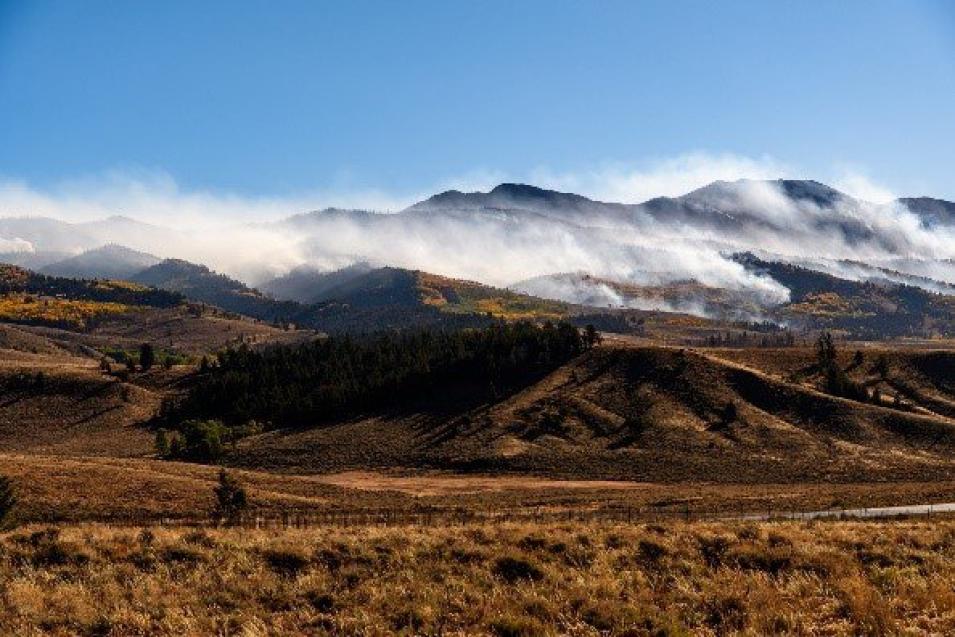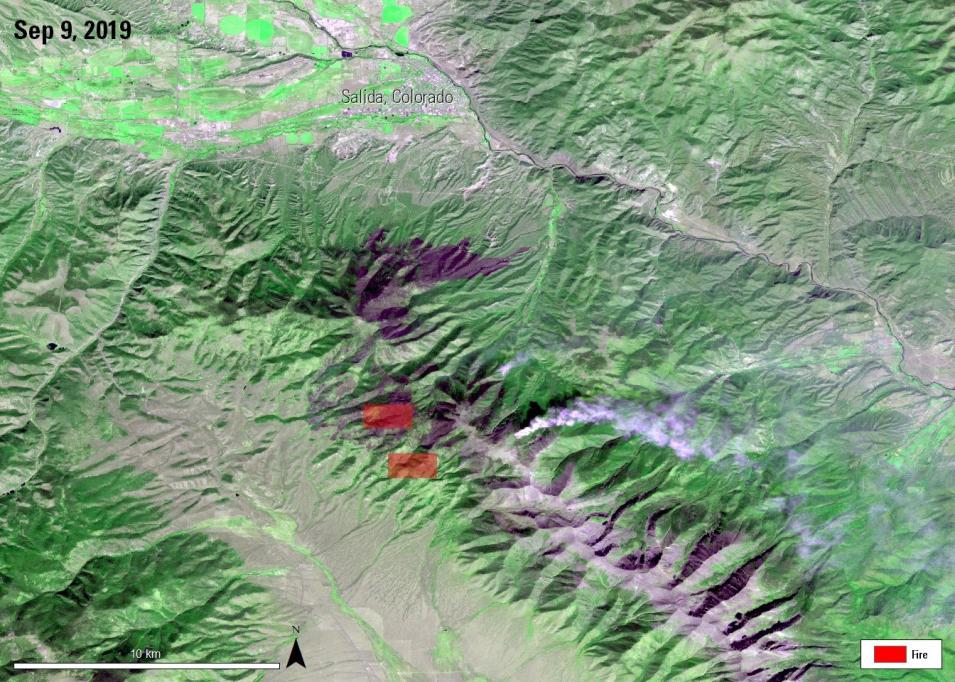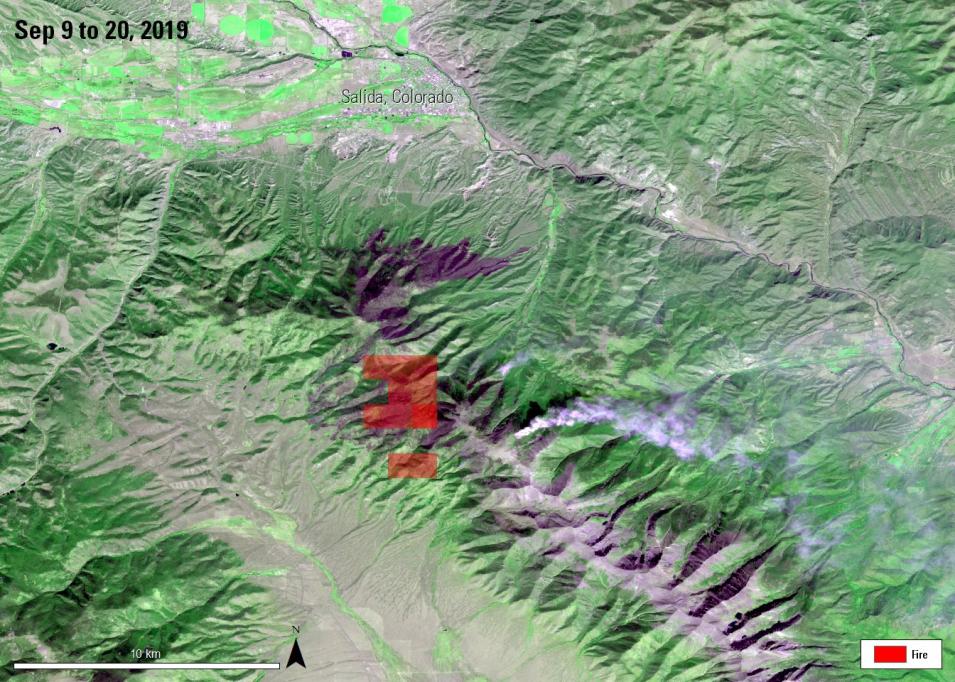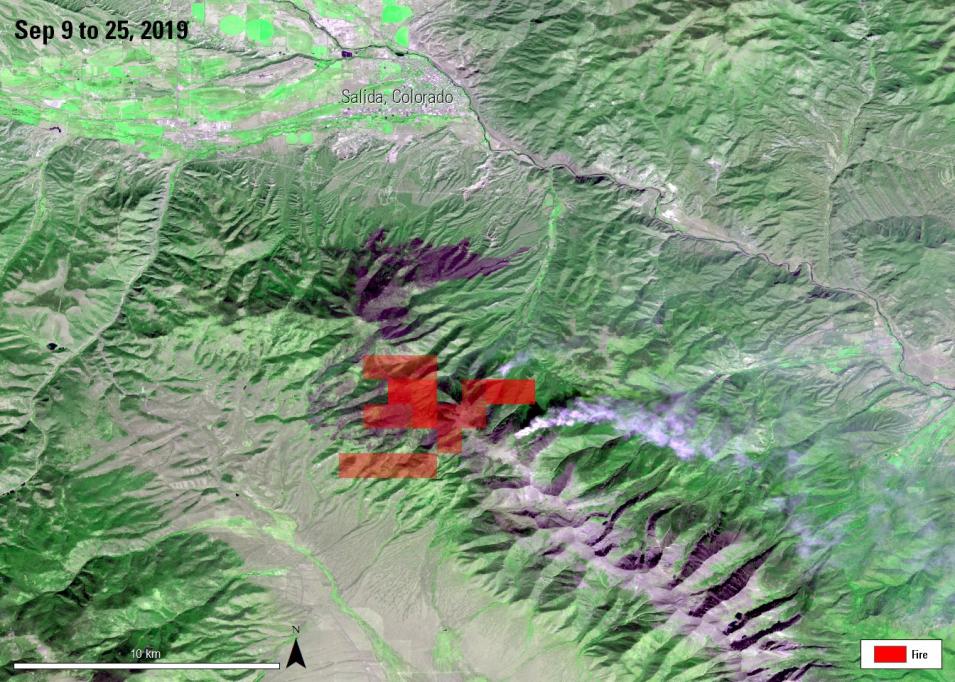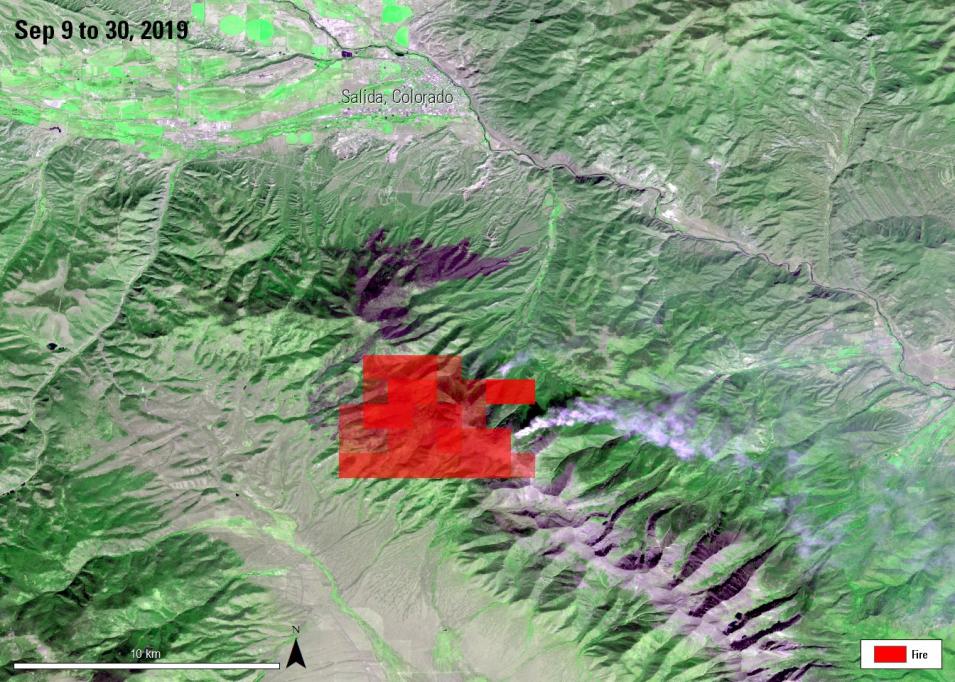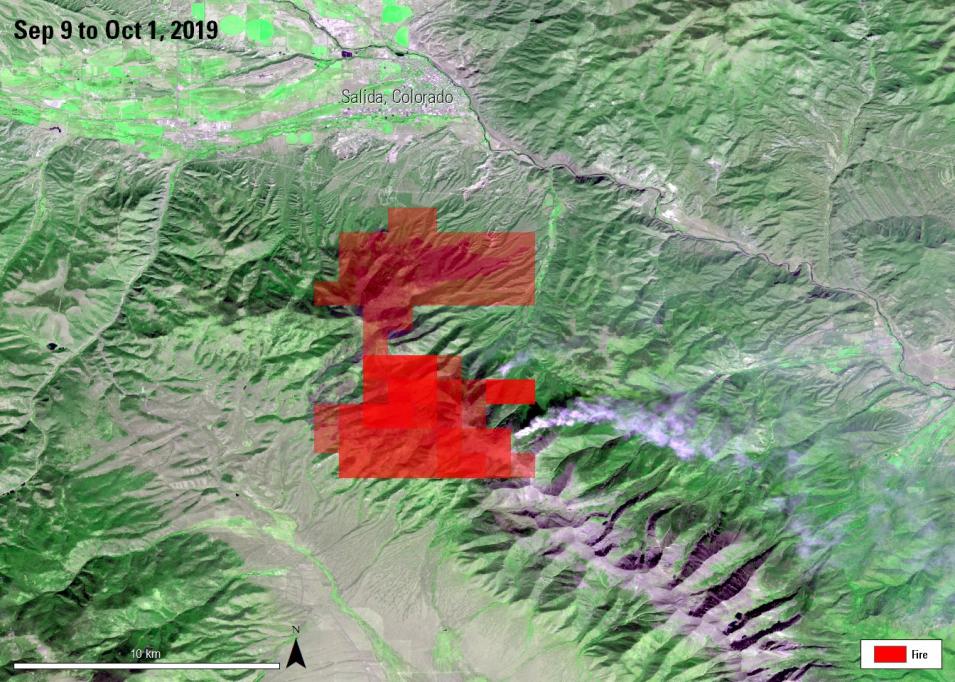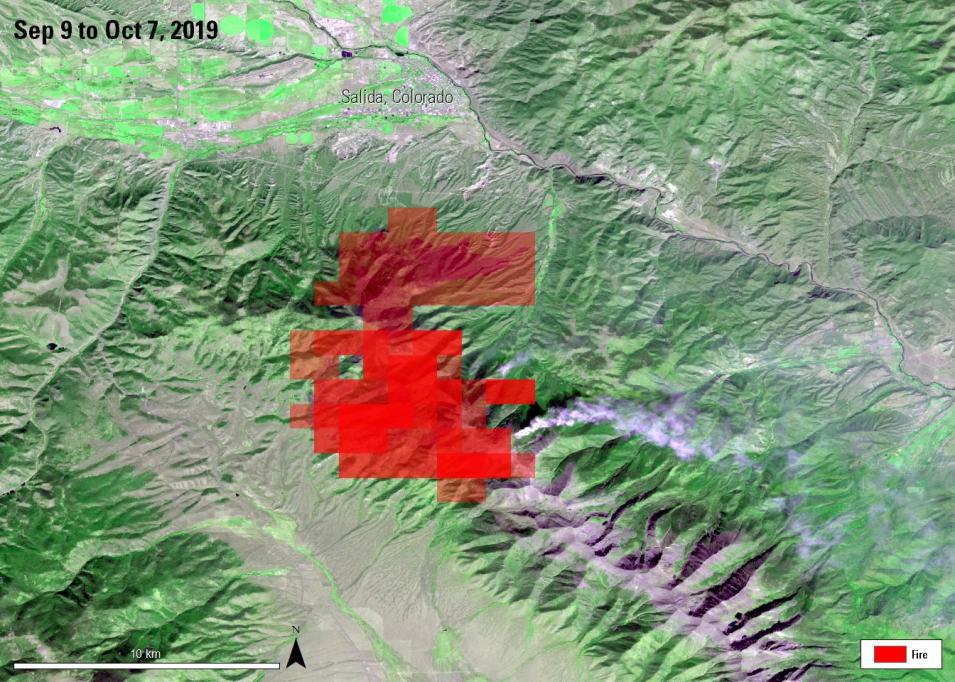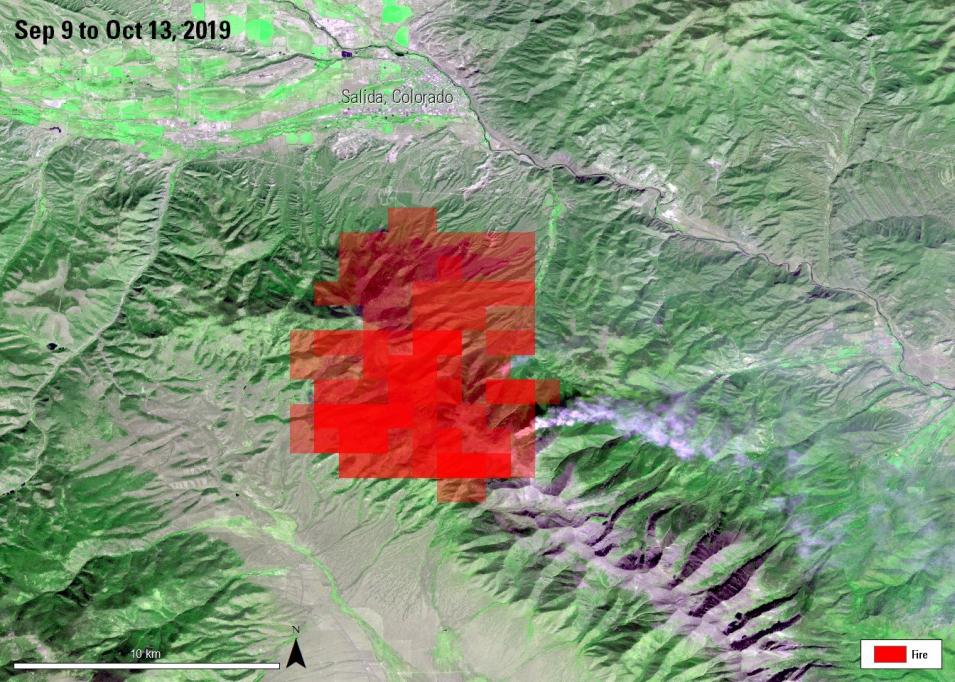Introduction
Wildfires that strike heavily-populated areas often get significant media coverage along with the increases in budgets and resources needed to contain them. But what can be done to monitor and fight wildfires raging in the more remote parts of the world?
On Sept. 8, 2019, a lightning strike sparked a fire that smoldered on the southern slopes of Colorado’s Sangre de Cristo Mountains near the city of Salida. Firefighters worked to steer the slowly-spreading fire, dubbed the Decker Fire due to its proximity to Decker Creek, away from the few homes and structures in the area. It did not pose a substantial threat to the general public, so land managers let it remain largely uncontained to allow it to clear out dead and dry vegetation.
However, on October 1, low humidity and wind gusts created fire conditions that pushed the blaze to the north side of the ridge, closer to Salida. This direct threat to the city mobilized authorities to aggressively combat the fire with fire breaks and aerial water drops that controlled the direction and intensity of the fire. At its greatest extent, the Decker Fire burned over 36 square kilometers (9,000 acres) of the Rio Grande and San Isabel National Forests. Six weeks of concentrated efforts were able to get the fire 75% contained, with an estimated full containment date of December 20. However, the solution to natural disasters can sometimes be found within nature itself. A heavy snowfall on October 23 doused the last remnants of the Decker Fire.
